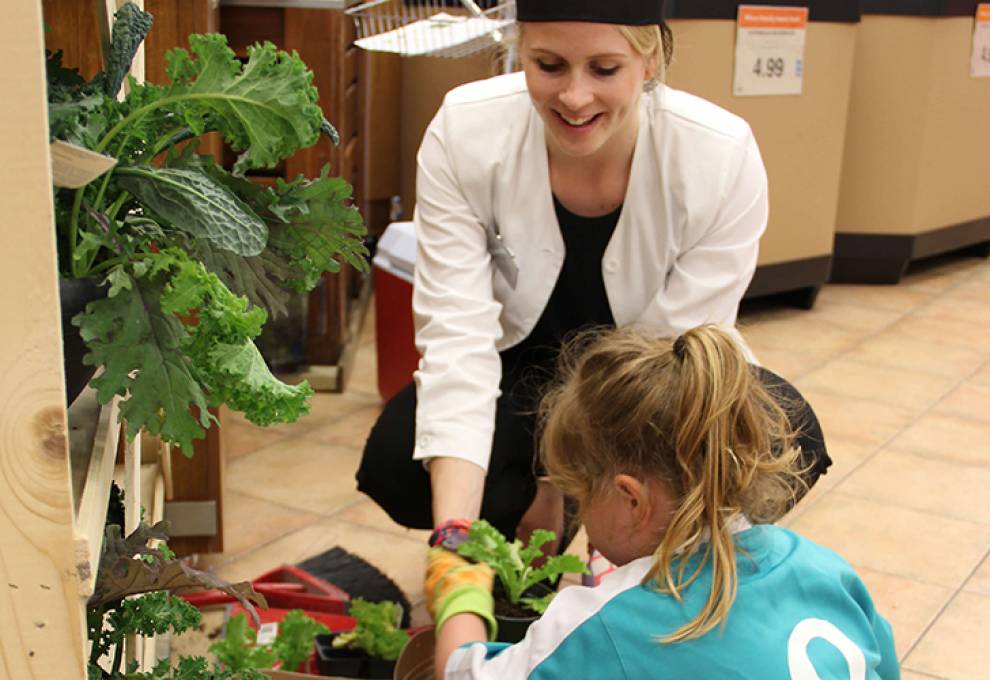
In the grocery store – in fact, in dozens of grocery stores across Ontario -- you have cheerleaders wearing hats that say DIETITIAN.
More and more, they’re becoming an important link between you and consumers. Registered dietitians, day after day, face questions — some detailed, some fearful, some very confused — about what Canadian farmers grow.
In Ontario, Zehrs started an in-store dietitian program in 2011 with five dietitians. Now, that number has mushroomed to 75.
I met one recently, an enthusiastic recent University of Guelph graduate named Heidi Pola. She’s a Stratford native with a master’s degree in applied nutrition, who serves as a registered dietitian at two Zehrs stores in Waterloo.
Note: her degree is not in agriculture. And she is not from a farm. Growing up, her house backed onto a cornfield, she says, but that’s about as close as she got to production agriculture.
Nonetheless, she’s on the front lines, bridging the gap between farmers and consumers, about food and nutrition. So are 75 of her colleagues across the Zehrs-Loblaw chain in Ontario.
Registered dietitians’ role is growing as consumers increasingly ask questions about food. Like Pola, they went to school and achieved advanced degrees to understand it.
They know its nutritional value, and know how it affects people – or how it doesn’t.
I’m not sure farmers have grasped how important dietitians, retailers and processors have become in determining why consumers buy, or don’t, how they view homegrown food and the kind of answers consumers receive about it.
Pola isn’t a grizzled veteran. She hasn’t heard it all, by any means. But she told me from her experience thus far, consumers are typically asking about three things: the benefits of local food, organic versus conventional food, and how to prepare food.
Here’s what she says.
First, when it comes to local, she’s a big fan. At peak production season, close to half of the produce in her stores is Canadian grown.
“When produce is harvested, it’s meant to be enjoyed right away,” she says. “There’s some value knowing the food is from close to home.”
As far as organic versus conventional food, she takes a nutritional rather than a philosophical approach.
And nutritionally, she says, there’s no difference. One is not better, or worse, than the other. “I say it’s a personal choice,” she says. “It may be a matter of what people can afford. But as a dietitian, I’m a fruit and vegetable ambassador. I’d rather see consumers buy conventional produce than not buy organic produce, because they can’t afford it.”
And what about GMOs?
“I am not concerned about GMOs,” she tells people. “The government makes sure they’re regulated. They’re considered safe.”
And the final question: What do I do with food once I get it home?
For many consumers, the problem is they do nothing with food when they get it home; about 20 per cent of what we buy ends up as waste. That means a huge opportunity exists for dietitians and others to help consumers learn how to prepare food.
In June, nutritionists were on hand as the Loblaw group put a 38-foot greenhouse on the road — with stops in Guelph, Kitchener and Cambridge, among others — to teach customers about what some fruit and vegetables look like growing, such as cucumbers and tomatoes.
If you have a garden, you take this kind of stuff for granted.
But these days, despite urban agriculture and the like, more people don’t have gardens, than do.
And the more they learn about food from professionals such as Pola, the better.

Add new comment